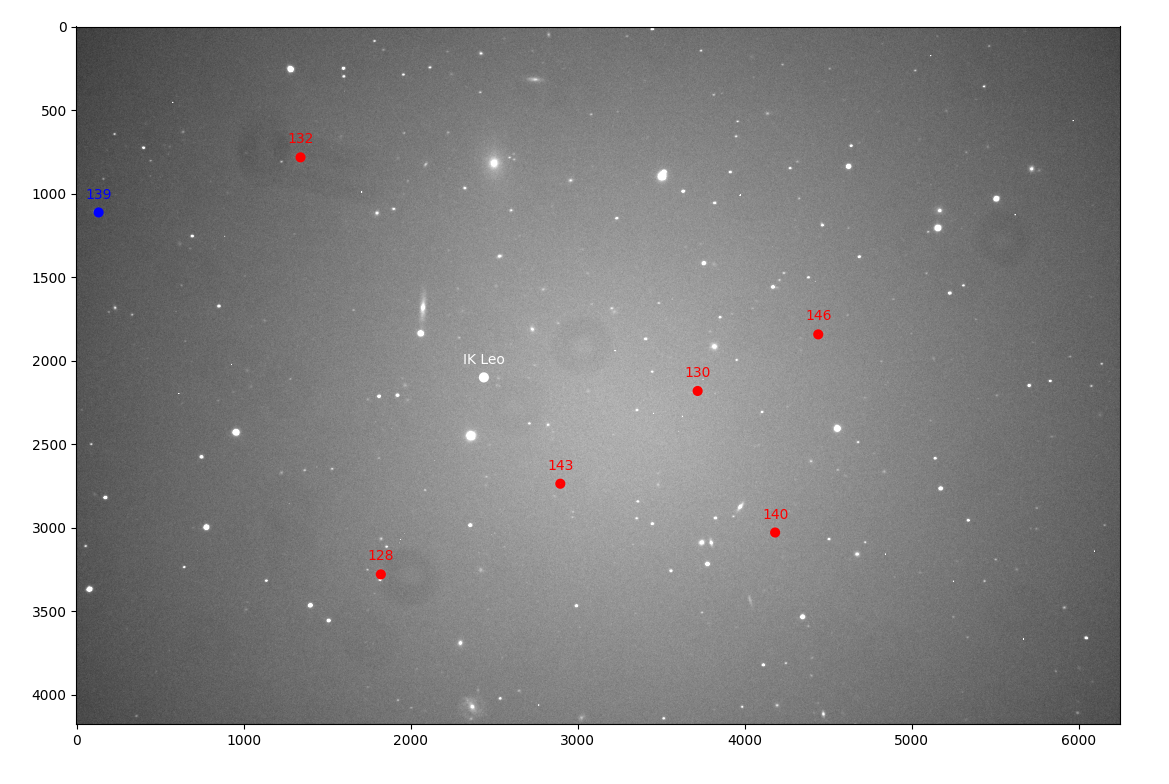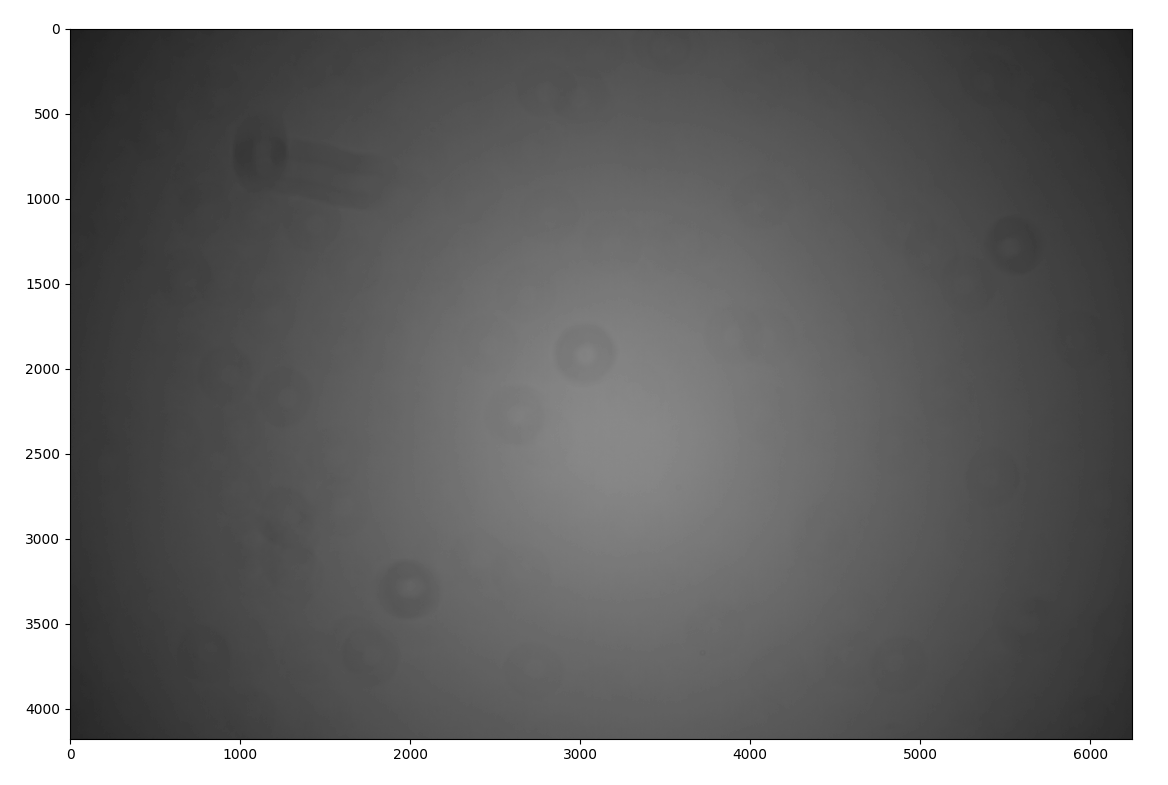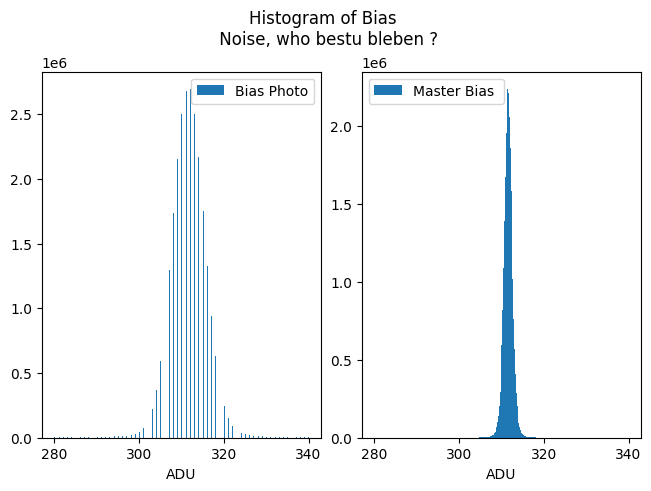What is Calibration ?
It's complicated, again.
In order to have a measurement that is as accurate as possible, one can correct the science frames (your photo's of the stars) for camera, optical and filter impurities. We can correct for these systematic errors by taking bias, dark and flat frames.
Lets explain.
A photo is taken in 16bits, this means that every pixel has an integer value between 0 and 65535.
Some camera's are 14 bit, but most of the time that gives also an integer value between 0 and 65535 (but in steps of 4).
A first nice to know thing is that after calibration the integer values of a photo are converted to float values. Meaning we convert from a number with nothing after the komma to a number with values after the komma. This means that negative values for a pixel are no real problem, after calibration.
A drawback is that the size of a photo is doubled in megabytes. But at the price of disk space nowadays, who cares ???
Some Calibration Examples
This is an example of a calibrated and not calibrated Science Frame : |
 |
The Meridian Flip Effect
Sometimes one sees a difference in magnitude before and after the meridian flip. This typîcally is caused by bad darks or bad flat. This happens when there are light leaks.
 |
 |
The Camera
The camera sensor can be corrected for three different effects :
- Read Noise : taking a photo generates a base layer of noise. That is the same for every picture of your camera, at a specific level of gain setting. This read noise has certain spread (gaussian distribution).
- Offset : As explained before, a photo can not have a pixel value lower than zero. Due to the spread in the read noise, that could happen. Therefore on adds an offset (basically a number of ADU's) to each pixel.
- Dark Current, or hot, warm and dark pixels : whilst read noise and offset is present for each photo, these dark current effects build up whilst exposing. Thus as warm pixel will get warmer if longer exposured.
BIAS Frames :
In order to correct for the base layer of read noise and offset, one takes BIAS frames. Those are taken in absolute darkness with the shortest possible shutterspeed. As this changes for each gain, offset setting and camera mode (QHY) that you use, they should be taken for each combination that you use.
More about BIAS Frames : More about Bias Frames
DARK Frames :
In order to correct for the dark current one takes DARK frames for each posible exposure length of the science frames, also in total absolute darkness
More about DARK Frames : More about Dark Frames
Are BIAS frames really necessary ?
As every photo does contain the same read noise and offset, dark frames do contain them also.
Thus, BIAS frames are not necessay ?
Well, yes and no !
No : if you have dark frames with exactly the same exposure length as your science frames, it is indeed not necessary to have bias frames. It is even good practice to avoid the bias frames in this case, this produces a little bit less of noise in the result. Marginal, but present.
Yes : if you do not have dark frames with exactly the same exposure length as your science frames, AstroPie can scale them to the correct length. BUT, this is only possible if the bias layer has been removed from the dark frame.
The Optical Train
Here we can correct for two effects : dust in your optical train, and vignetting on the photo's.
What is the easiest way to correct for dust ?
There is one obvious way to correct for dust : keep your optics and filters clean !
Especially dust on the filters and dust on the glass above your sensor.
What is vignetting ?
At the outer edges of the Science frames one can see a darkening. This is called vignetting. As seen in the example above.
Flats.
Flats are photographs of your drive train without stars : these can be taken with various techniqus, such as a LED box on top of your telescope. The idea is the have a histogram that is "half way, or a bit less".
More about FLAT Frames : More about Flat Frames
Mathematics Rulez.
Calibration, and photometry in general, is just a matter of mathematics.
A photo can be seen as a big matrix of integers, or, after calibration, a big matrix of floating point values.
Calibration becomes then a form of very simple matrix operations : adding, subtracting and dividing matrices.
With a Formula :
Raw Science Photo = Offset + Read Noise + Dark Current + (Stars + Sky) / Flat + Noise
Bias Frame Formula :
As a bias frame is taken in absolute dark, and with a ultra short exposure time :
Bias = Offset + Read Noise
Dark Frame Formula :
A dark frame is taken also in absolute dark, but with a long exposure time :
Dark = Offset + Read Noise + Dark Current / second * seconds + Noise
or :
Dark = Bias + Dark Current + Noise
Flat Frame Formula :
Flat = Bias + Dark Current (most of the cases negligable) + Light + Noise
Science Frame Formula :
Raw Science Photo = Offset + Read Noise + Dark Current + (Stars + Sky) / Flat + Noise
or, if exposure with a dark frame matches :
Raw Science Photo = Dark Frame(not corrected for bias) + (Stars + Sky) / Flat + Noise
or, if exposure with a dark frame does NOT match :
Raw Science Photo = Bias + Dark Frame(corrected for bias) / exposure time in seconds of dark frame * exposure time of Science frame + (Stars + Sky) / Flat + Noise
What is the idea about Master Frames ?
An example for a Bias Master :
Bias = Offset + Read Noise
Noise is always present when photons or electrons are counted (quantum mechanics at play). As that noise is totally random it can be lowered by averaging a number N of photo's, which lowers the noise by a factor : $ \sqrt {N} $.
That effect is visible in this histogram. Left a histogram of one single bias photo. The width of the curve indicates the noise level. At right the same histogram of a master bias averaged out of 25 bias photo's.
This technique for lowering noise can be used for Bias, Dark and Flat Frames. Stacking Light frames helps too.

All Together Now : Calibration of the Science Frames
Once the Bias, Dark and Flat masters have been created, one can correct the actual Science Frames.
This is explained in great detail on this page : More about calibration of Science Frames
